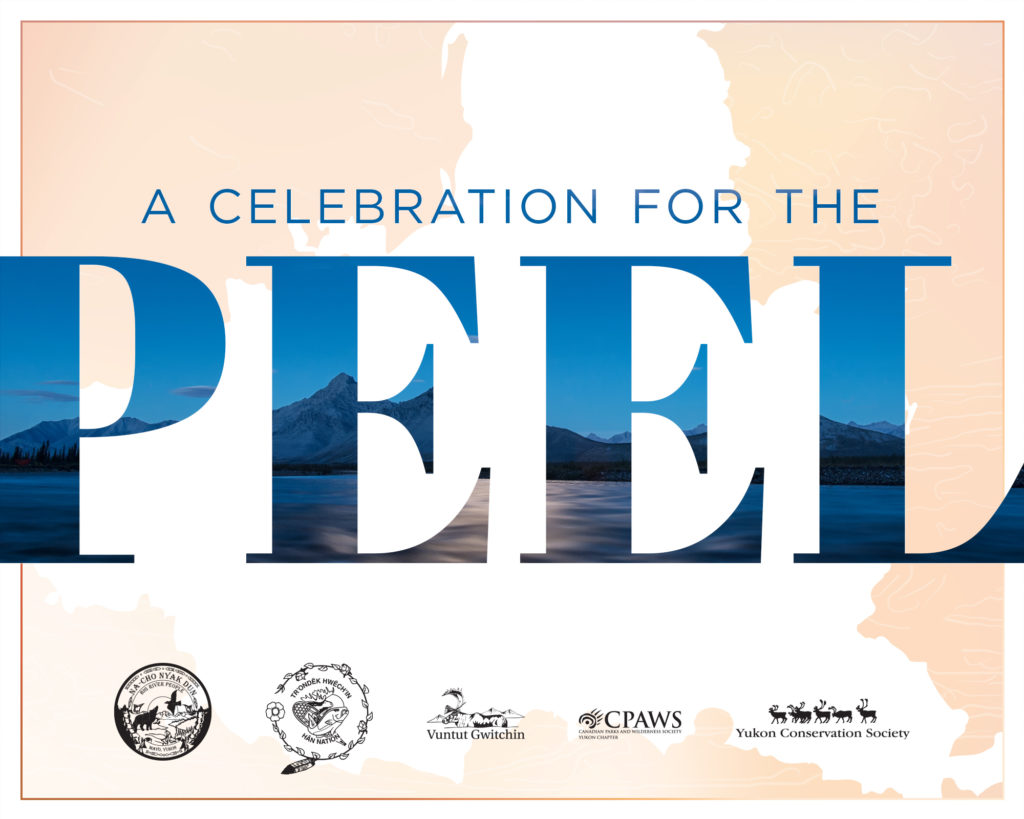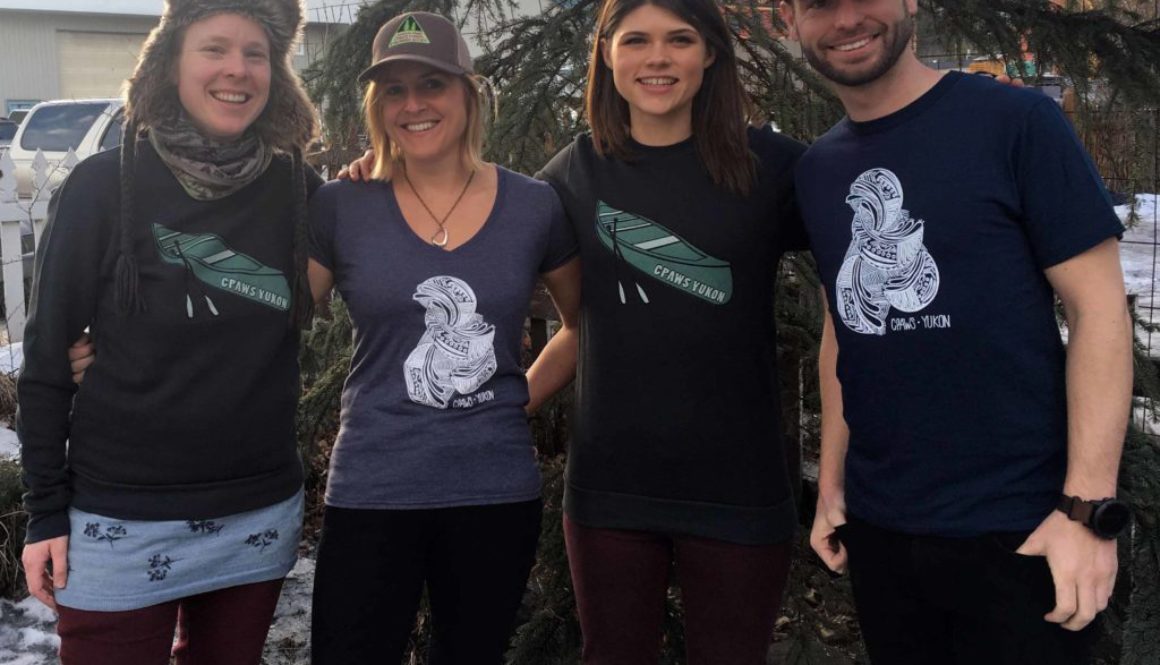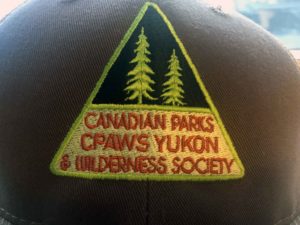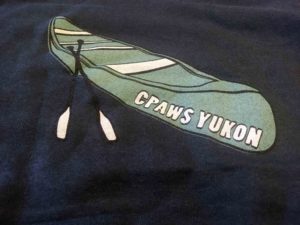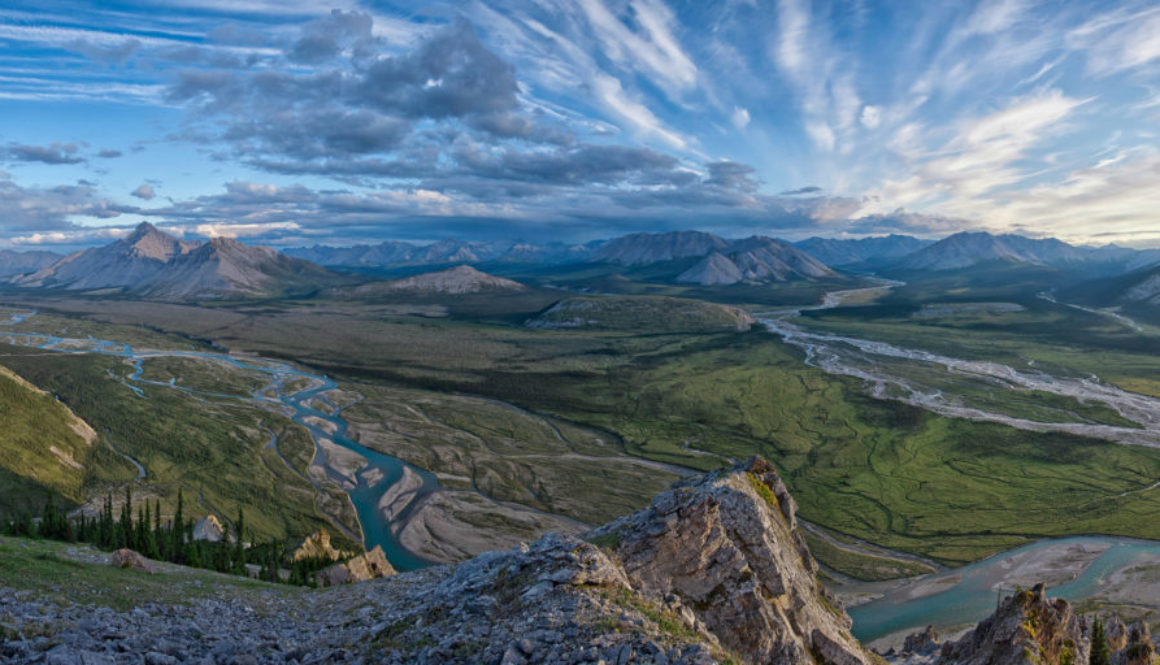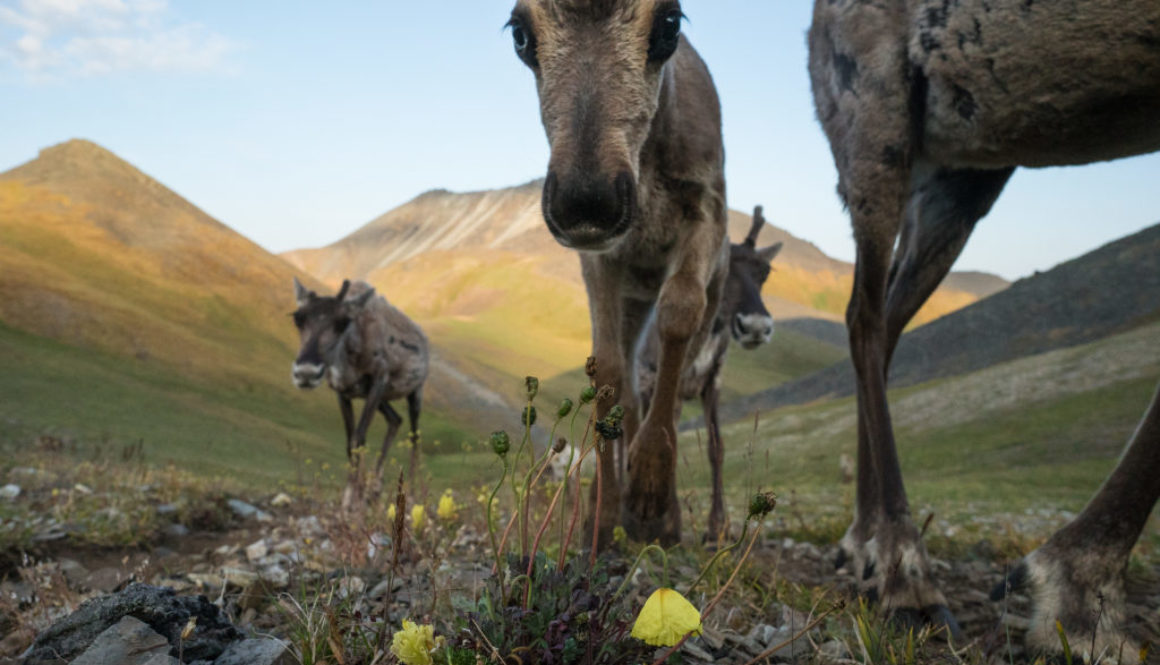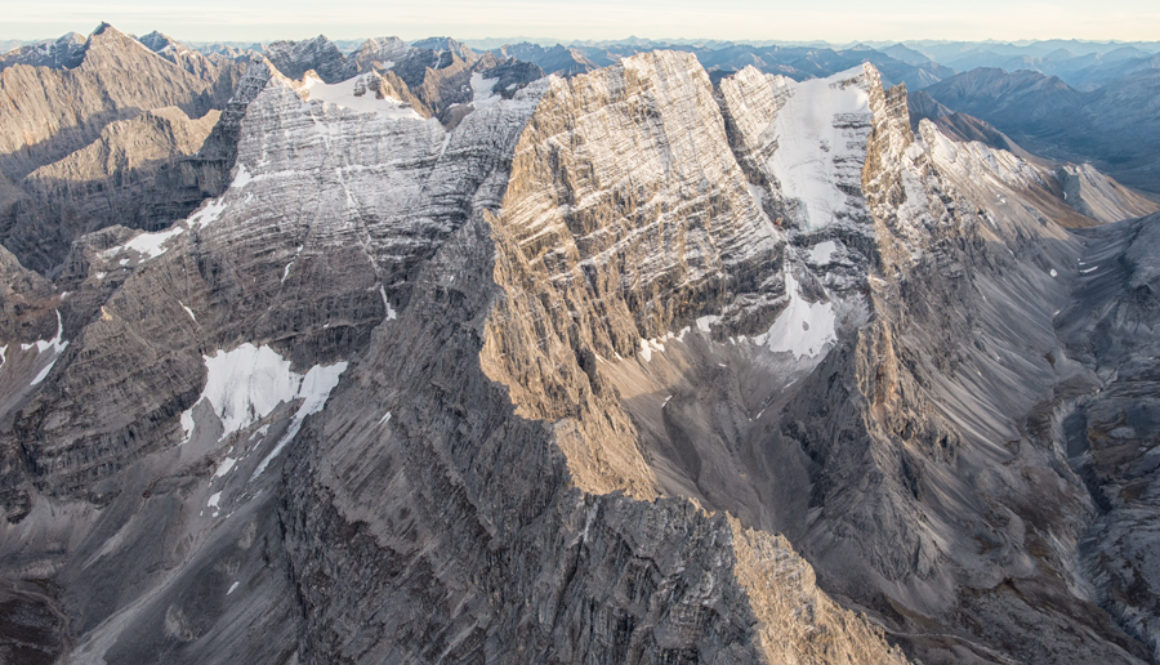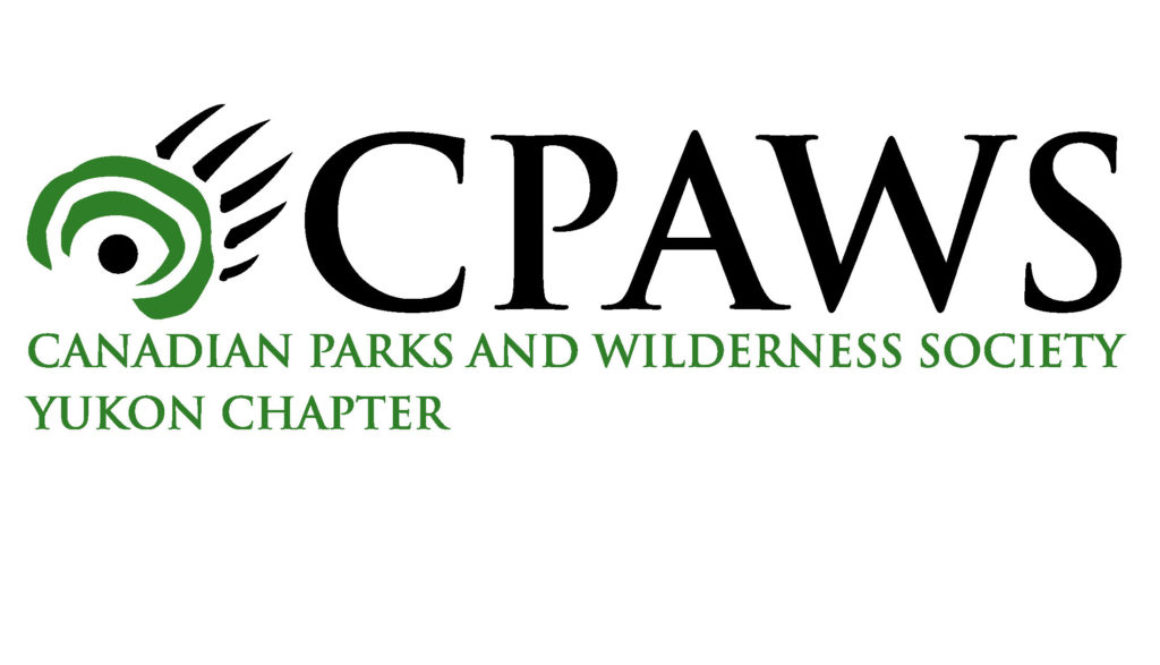December 1, 2017 — Ottawa, ON — Yukon First Nations and environmental groups have won a landmark Supreme Court case. The judgment released today upholds a land use plan that protects the majority of the Peel Watershed in northeastern Yukon. It’s a massive victory for Yukon First Nations and cause for environmental celebration on a global scale.
The court was asked to rule on two points:
-The correct remedy for the Yukon government’s derailment of the land use planning process.
– Whether parties to a land use planning process can reject a recommended plan at the final stage in the planning process.
In a unanimous decision, the highest court in Canada ruled that the Yukon government must complete meaningful final consultations on a land use plan that protects 80% of the pristine watershed. This comes after the Yukon government, under previous leadership, derailed the planning process, forcing through its own agenda to industrialize 71% of the Peel and betraying its constitutional obligations. The ruling sets a precedent for the future of land use planning in the territory, ensuring the integrity of First Nations Final Agreements is upheld and Yukon is working together in the spirit of reconciliation.
The court did not rule on the Yukon government’s right to reject a land use plan. The ruling does provide guidance that limits the Yukon government’s ability to modify or reject a plan at the final stage of the process.
The Peel Watershed is one of the largest unspoiled natural areas in North America. The 68,000 km2 of rugged wilderness, larger than Nova Scotia, lies within the traditional territories of three Yukon First Nations — Tr’ondëk Hwëch’in First Nation, the First Nation of Na Cho Nyäk Dän, Vuntut Gwitchin First Nation — as well as the Tetlit Gwich’in in the neighbouring Northwest Territories, who have relied on the watershed for physical and cultural nourishment for millennia.
Today’s ruling is the culmination of a three-year legal battle between a coalition of the affected Yukon First Nations, who partnered with the Canadian Parks and Wilderness Society, Yukon Chapter (CPAWS Yukon) and the Yukon Conservation Society (YCS) to take Yukon government to court over its breach of the First Nations Final Agreements during the land use planning process.
Although the new Yukon government has promised to accept the Final Recommended Plan, which protects 80% of the watershed, today’s ruling sets a precedent for how modern treaties will be interpreted across Canada for decades to come.
Quotes
“For many years, we’ve been on a path to hold the Yukon Government accountable for promises made during the land claims process. We’ve been working hard towards protecting an area valuable to our First Nations people and so many other Yukoners. I am extremely pleased to be finally arriving on a path of certainty. The Supreme Court of Canada has upheld our treaty agreements and this is the outcome we were hoping for. This is a victory for our modern-day treaties and the collaborative planning processes promised for Land Use Planning. We look forward to working with the present government on the next steps outlined by the court.”
Chief Roberta Joseph, Tr’ondëk Hwëch’in First Nation
“I want to thank Yukoners and Canadians for all the support in protecting the integrity of our Final Agreements. The agreements were designed for us to protect the environment, and now we will work in unity, for the animals, the land and the people. As we move forward, we hope that Canadians and Yukoners will plan for the betterment of humanity. I’m looking forwards to coming home to celebrate.”
Chief Simon Mervyn, First Nation of Na Cho Nyäk Dän
“We have always been responsible stewards of our Traditional Territory even in the face of adversity and uncertainty. We are pleased that the Court agrees that the path towards reconciliation requires honourable implementation of the spirit and intent of our Final Agreements.”
Chief Bruce Charlie, Vuntut Gwitchin First Nation
“Today is an incredible day for Canada’s wilderness! Thanks to the Supreme Court of Canada’s ruling, the future of this extraordinary landscape now looks much brighter. We’re grateful that future generations will be able to enjoy the land as we do today, and that the wildlife that thrives in the Peel Watershed will continue to have a home.”
– Chris Rider, Canadian Parks and Wilderness Society, Yukon Chapter
“The land use planning process, negotiated in modern-day treaties, brought people together for a common goal — protection of the sacred Peel Watershed — and allowed us to stop a government gone off the rails. It is a vital democratic process that must be defended. And that is what we have accomplished today.”
Christina Macdonald, Yukon Conservation Society
Background
The Peel Watershed is the northern anchor for the Yellowstone to Yukon conservation corridor, providing increasingly crucial habitats to iconic and rare species as climate change and habitat loss threaten North American wildlife.
A seven-year planning process, laid out in the land claims agreements signed between Yukon First Nations and the federal and territorial governments, had produced a Final Recommended Plan to keep 80% of the Peel Watershed off-limits to roads and industry. However, in 2014, the Yukon government rejected this plan in favour of its own plan to open up over 71% of the watershed to roads, mining and drilling. This move derailed the land use planning process that is specified in Yukon First Nation Final Agreements.
This sparked a three-year legal battle between the coalition of affected First Nations and environmental groups, against Yukon government over the future of the Peel Watershed and the integrity of land use planning provisions in the Final Agreements. The case was initially heard by the Supreme Court of Yukon in 2014 and then again by the Court of Appeal of Yukon in 2015. The interpretation of Chapter 11 of the Final Agreements is central to the case. Both Yukon courts found that the Government of Yukon failed to honour its obligations under these agreements.
Where the courts differed was on the remedy for Yukon government’s breach of process. The Supreme Court of Yukon ordered that the land use planning process should be returned to the stage of final consultation with the First Nations and affected communities. The ruling also prevented the Yukon government from introducing new modifications to the Final Recommended Plan. However, the Court of Appeal of Yukon ordered that the process should be sent back to an earlier stage of consultation, which would allow the government to advance entirely new modifications to the Plan and unwind years of progress. The Court of Appeal also ruled the government has the right, at the end of the day, to reject the entire Peel Watershed Final Recommended Plan.
Renowned Indigenous rights lawyer, Thomas Berger, represented the First Nations and environmental groups at the Supreme Court on March 22 of this year.
Media Contacts:
Heather Badenoch at heather@villagepr.ca, 613-859-8232
Nadine Sander-Green at nsander-green@cpawsyukon.org, 867-335-9758
Julia Duchesne at outreach@yukonconservation.org, 250-507-14
***
Décision historique de la Cour suprême, victoire pour les Premières nations et les groupes environnementaux.
La décision unanime de conserver le plan de protection du bassin hydrographique de la rivière Peel crée un précédent sur la manière dont les traités modernes seront interprétés à l’échelle du Canada.
OTTAWA, ON (1er décembre 2017) – Les Premières nations du Yukon et les groupes environnementaux ont remporté une victoire historique devant la Cour suprême. Grâce à la décision rendue aujourd’hui, le plan d’aménagement du territoire protégeant la majorité du bassin de la Peel dans le nord-est du Yukon sera conservé. Il s’agit d’une victoire imposante pour les Premières nations, et cette décision sera célébrée à l’échelle mondiale.
La Cour avait été invitée à statuer sur les deux points suivants :
La façon adéquate de remédier au déraillement du processus de planification de l’aménagement du territoire.
La possibilité ou non pour les parties impliquées dans un processus de planification d’aménagement du territoire de recommander un plan au stade final de la planification.
Dans une décision unanime, le plus haut tribunal du Canada a conclu que le gouvernement du Yukon devait mener à terme les consultations finales pertinentes dans le dossier d’un plan d’aménagement du territoire visant à conserver à l’état naturel 80 % du bassin hydrographique. Cette décision survient après que le gouvernement du Yukon, sous l’administration antérieure, avait fait dérailler le processus de planification et imposé son propre programme d’industrialiser 71 % du bassin de la Peel, bafouant de ce fait ses obligations constitutionnelles. Elle constitue un précédent pour la planification future de l’aménagement du territoire, et assure la protection de l’intégrité des accords définitifs des Premières nations en plus de faire en sorte que le Yukon adhère à l’esprit de réconciliation.
La Cour n’a pas statué sur le droit du gouvernement du Yukon de rejeter le plan d’aménagement du territoire. La décision procure des lignes directrices qui limitent le pouvoir du gouvernement du Yukon de modifier ou de rejeter un plan au stade final du processus.
Le bassin de la Peel constitue le plus vaste territoire naturel intact de toute l’Amérique du Nord. Il couvre 68 000 km2 d’habitats sauvages, une superficie plus importante que celle de la Nouvelle-Écosse, et s’étend sur les territoires traditionnels de trois Premières nations du Yukon — Tr’ondëk Hwëch’in, Na Cho Nyäk Dän et Vuntut Gwitchin — ainsi que d’une autre des Territoires du Nord-Ouest, Tetlit Gwich’in, qui, depuis des millénaires, dépend de ce bassin hydrographique pour ses besoins physiques et culturels.
La décision rendue aujourd’hui représente le point culminant de trois années de lutte judiciaire opposant la collation composée des Premières nations du Yukon affectées, alliées à la Société pour la nature et les parcs du Canada, de la section Yukon de la SNAP (CPAWS Yukon) et de la Yukon Conservation Society (YCS) au gouvernement du Yukon. La collation dénonçait le fait que le gouvernement ne respectait pas les accords définitifs des Premières nations durant le processus d’aménagement du territoire.
Bien que le nouveau gouvernement du Yukon a promis d’accepter le plan final recommandé – la protection du 80 % du bassin – la décision rendue aujourd’hui crée un précédent sur la manière dont les traités modernes seront interprétés à l’échelle du Canada durant les décennies à venir.
Citations
« Durant plusieurs années, nous avons lutté pour que le gouvernement respecte les promesses faites durant le processus de revendications territoriales. Nous avons travaillé fort pour protéger un territoire précieux aux peuples des Premières nations et à d’innombrables Yukonnais. Je suis extrêmement heureuse de constater que nous sommes enfin sur la voie de la certitude. La Cour suprême du Canada a imposé le respect de nos accords de traités, et c’est la décision que nous recherchions. Cela représente une victoire pour nos traités modernes et pour les processus de planification collaborative inhérents à l’aménagement du territoire. Nous avons hâte d’entamer avec l’actuel gouvernement les prochaines étapes mises de l’avant par la Cour. »
Chef Roberta Joseph, Première nation de Tr’ondëk Hwëch’in
Je veux remercier les Yukonnais et les Canadiens d’avoir appuyé la préservation de l’intégrité de nos accords définitifs. Ces accords ont été conçus pour protéger l’environnement, et c’est maintenant dans l’unité que nous conserverons les animaux, le territoire et les gens. Alors que nous poursuivons notre travail, nous espérons que les Canadiens et les Yukonnais parviendront à améliorer la situation de l’humanité. Je me réjouis de rentrer à la maison pour célébrer. »
Chef Simon Mervyn, Première nation de Na Cho Nyäk Dän
« Nous avons toujours été des gardiens responsables de nos territoires traditionnels devant l’adversité et l’incertitude. Nous sommes heureux que la Cour reconnaisse que pour s’engager sur la voie de la réconciliation, il faut appliquer de manière honorable l’esprit et l’intention de nos accords définitifs. »
Chef Bruce Charlie, Première nation de Vuntut Gwitchin
« Aujourd’hui est une journée incroyable pour les territoires naturels du Canada ! Grâce à la décision de la Cour suprême, l’avenir de ce paysage extraordinaire est maintenant plus reluisant. Nous sommes heureux que les générations futures puissent profiter du territoire, comme nous le faisons aujourd’hui, et que la faune du bassin de la Peel puisse continuer à y prospérer. »
– Chris Rider, Société pour la nature et les parcs du Canada, section Yukon
« Le processus de planification de l’aménagement du territoire, négocié à l’aide de traités modernes, a réuni les gens dans un but commun – la protection du bassin sacré de la Peel – empêchant ainsi le gouvernement de dérailler. Il s’agit d’un processus démocratique vital qui doit être défendu. Voilà ce que nous avons accompli aujourd’hui. »
Christina Macdonald, Yukon Conservation Society
Contexte
Le bassin de la Peel couvre la partie la plus au nord du corridor de conservation qui s’étend de Yellowstone au Yukon. Ce corridor procure des habitats de plus en plus critiques à des espèces rares et emblématiques alors que les changements climatiques et la perte d’habitats menacent la faune nord-américaine.
À l’issue d’un processus de planification de sept ans exposé dans les accords sur les revendications territoriales signés par les Premières nations du Yukon et les gouvernements fédéral et territorial, un plan d’aménagement final prévoyant la protection de 80 % du bassin de la Peel contre le développement routier et industriel avait été proposé. Pourtant, en 2014, le gouvernement du Yukon a rejeté le plan, ouvrant 71 % du bassin au développement routier, à l’extraction minière et au forage. Ce changement de direction a fait dérailler le processus de plan d’aménagement du territoire prévu dans les accords définitifs des Premières nations du Yukon.
Ce déraillement a causé une lutte judiciaire de trois ans opposant la collation composée des Premières nations du Yukon affectées et de groupes environnementaux au gouvernement du Yukon au sujet de l’avenir du bassin de la Peel et de l’intégrité des dispositions de l’aménagement du territoire telles que retrouvées dans les accords définitifs. L’affaire a d’abord été portée devant la Cour suprême du Yukon en 2014, pour se rendre en 2015 devant la Cour d’appel du Yukon. L’interprétation du chapitre 11 des ententes définitives a été cruciale lors du jugement. Les deux Cours du Yukon ont conclu que le gouvernement du Yukon n’avait pas respecté ses obligations en vertu de ces ententes.
Les deux Cours diffèrent dans leur jugement au sujet de la manière dont le gouvernement du Yukon doit remédier au non-respect du processus. La Cour suprême du Yukon a ordonné que le processus de planification de l’aménagement du territoire doive être repris au stade de la consultation finale avec les Premières nations et les communautés affectées. La décision a aussi empêché le gouvernement du Yukon d’introduire de nouvelles modifications au plan final recommandé. Quant à elle, la Cour d’appel du Yukon a ordonné que le processus soit renvoyé à un stade de consultation plus précoce, ce qui permettrait au gouvernement d’introduire de toutes nouvelles modifications au plan, minant ainsi le progrès effectué durant des années. La Cour d’appel a aussi statué que le gouvernement avait le droit, au bout du compte, de rejeter le plan final recommandé de l’aménagement du bassin de la Peel dans sa totalité.
Le célèbre avocat en droits autochtones Thomas Berger a représenté les Premières nations et les groupes environnementaux devant la Cour suprême le 22 mars 2017.
Contacts avec la presse :
Heather Badenoch à l’adresse heather@villagepr.ca, 613-859-8232
Nadine Sander-Green à l’adresse nsander-green@cpawsyukon.org, 867-335-9758
Julia Duchesne à l’adresse outreach@yukonconservation.org, 250-507-1453
